Places
List of objects included in the map
Issa Tilenbaiuly Mausoleum
Location: Mangistau district, Mangistau region, 20 km to the east from Shetpe village, buried in Sarykyz necropolis in Alatorpa area.
Coordinates: N 44°28' 5.67" , E 51°48' 46.82"
Description of the Monument: In 1993 it was included in the governmental records with the local status. As a result of the research at the necropolis 11 monuments were recorded. Amongst them 1 mausoleum and 10 saganatams. The dome of the mausoleum is helmet-shaped, riveted with worked slabs of limestone and sandstone inside and outside. In the front part there is a rectangular opening, images of the eagle and the sun and ornaments. In the upper part of the mausoleum there is an inscription 'Issa'.
Historical Data, Legends and Stories: Issa Tilenbaiuly is one of the leaders of the rebellion of the Mangystau Kazakhs against the tsarist colonialists in 1869-1872. This rebellion is considered one of the largest in the history of Kazakhstan. Issa Tilenbaiuly (1829-1909) was a great warrior, known to the people, bi, versatile and creative person, who ruled the country for many years. He is the tenth descendant of Adai. The father of Issa, Utebai, popularly called and a place where his descendants lived is also called 'Zhamangara' village. A period of the poet's life was tragic. By decree of the tsarist government units were sent to Mangistau to establish 'Interim Provisions', they increased taxes, eliminated cattle and the country. At this time simple representatives of the people Issa Tilenbaiuly and Dossan Tazhiyev gathered people and raised the revolt, demonstrating an example of perseverance, tolerance, courage and heroism. Dossan was a commander, an example of courage, and Issa was a brave warrior, fair biy, akyn and sure shot. After the Russian conquest of Khiva in 1873, Issa Tilenbaiuly headed the rebellion of Mangistau peasants and fought against the raging Russian rule oppressing the Kazakh people. Being frightened of public outrage the tsarist government called military units from all over the country. Peasants, armed with sabers and other simple weapons could not stand against well-armed military units of the tsarist army, arrived from the Caucasus, Volga and the Urals. Tsarist officials wrote a letter to the tsar about the rebellion of Issa Tilenbaiuly in Mangistau. Tsarist government forgiven Issa Tilenbaiuly and appointed him to public office using his reputation among the people for their benefits. For over 35 years Issa Tilenbaiuly acted as a volost ruler. Stories about how he exercised power and his poems was very popular among the people. He was a very honest man in the tsarist government, a worthy man, thinking about the needs of people. Evidence of his poetic abilities are such poems like 'Kuikenen Atandarda', 'Khiuga Keterde', 'Dossandy Zhoktauy', 'Oyazga Baruy', 'Bolys Bolyp Zhyrgende', etc. His poems were widely distributed and highly valued by the people. Issa was a brave warrior, fair bi, a poet, famous hunter with hunting birds and sure shot. Such horses as 'Zhagal At', 'Shagadam Konyrat' nurtured and groomed by him were multiple winners in horse races (baiga), but even though he was not rich, he always gave the prizes of these competitions to people in need.
Source:
- 'Reference of Arabic Graph Texts on the Historical
and Cultural Sites in Aral-Caspian Interfluve', volume 1, N.A. Kulbayev, Almaty-2015
Views: 3151
Video
3D Модель
Маршрут
Hazret Yerzhan Burial
Shopan Ata Necropolis and Underground Mosque
Shakpak Ata Necropolis and Underground Mosque (14th–19th centuries)
Khatam-Ishan Mausoleum
The earliest structures here date back to the second half of the 17th c. The necropolis was developed in time and space in a circle, i.e. the most ancient constructions remained in the center. Out of the two extant domed mausoleums, the structure in the southern part of the necropolis is of particular interest. ...











